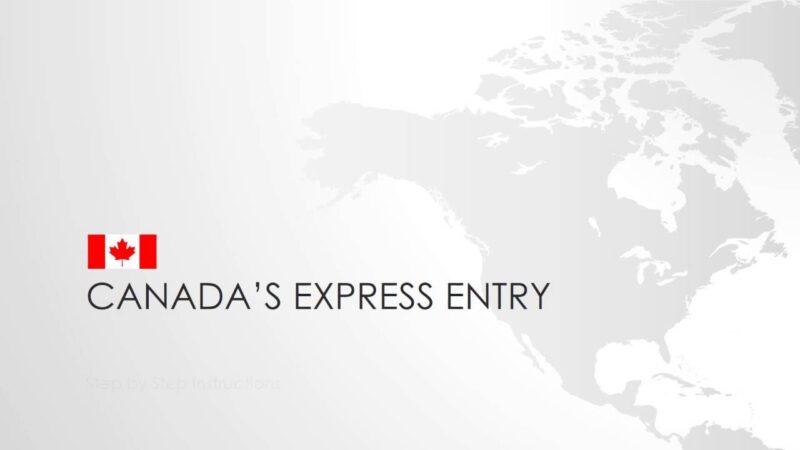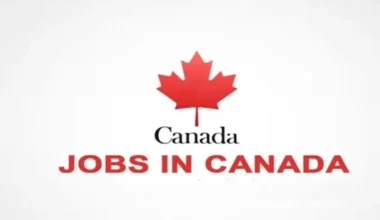If you’re a skilled worker dreaming of building a new life in Canada, Express Entry Canada represents your fastest and most efficient pathway to permanent residence. Since its launch in 2015, this immigration system has transformed how Canada selects and welcomes talented professionals from around the world, processing hundreds of thousands of applications with unprecedented speed and transparency.
Understanding the Express Entry guide from start to finish is essential for maximizing your chances of success. I will hold your hands as we walk through everything you need to know—from eligibility requirements and document preparation to creating your profile, improving your Comprehensive Ranking System (CRS) score, and ultimately receiving your Confirmation of Permanent Residence.
What Is Express Entry Canada?
Express Entry Canada isn’t actually an immigration program itself—it’s an online application management system that processes candidates for three major federal economic immigration programs:
Federal Skilled Worker Program (FSWP): Designed for skilled professionals with foreign work experience who possess the education, language ability, and qualifications to contribute to Canada’s economy immediately upon arrival.
Federal Skilled Trades Program (FSTP): Explicitly created for qualified tradespeople in eligible occupations, including construction, industrial, maintenance, and equipment operation trades, who hold valid job offers or certificates of qualification.
Canadian Experience Class (CEC): Targets individuals who have already gained skilled work experience in Canada, typically through Post-Graduate Work Permits, temporary work permits, or other temporary residence pathways.
The system uses a sophisticated points-based ranking called the Comprehensive Ranking System (CRS) to evaluate and rank candidates. The highest-scoring candidates receive Invitations to Apply (ITAs) for permanent residence through regular draws conducted by Immigration, Refugees and Citizenship Canada (IRCC).
What makes Express Entry Canada so attractive is its efficiency. Most applications are processed within six months, allowing successful candidates to transition quickly from applicants to permanent residents, ready to establish their lives in Canada.
Step 1: Check Your Express Entry Canada Eligibility
Before investing time and resources into the application process, you must confirm eligibility for at least one of the three programs managed through Express Entry Canada. Each program has distinct requirements, though they share some common criteria.
Basic Requirements Across Programs
Work Experience: Minimum of one year of continuous, full-time skilled work experience (or equivalent part-time hours) in occupations classified under National Occupational Classification (NOC) Training, Education, Experience, and Responsibilities (TEER) categories 0, 1, 2, or 3.
Language Proficiency: Demonstrated ability in English or French through approved tests (IELTS General Training, CELPIP General for English; TEF Canada or TCF Canada for French). Minimum Canadian Language Benchmark (CLB) levels vary by program.
Educational Credentials: Completion of Canadian secondary or post-secondary education, or foreign credentials with an Educational Credential Assessment (ECA) verifying Canadian equivalency.
Proof of Funds: Financial resources to support yourself and family members after arrival, unless you currently hold valid Canadian work authorization or have valid job offers.
Program-Specific Requirements
Federal Skilled Worker Program requires CLB 7 or higher in all language abilities, at least one year of continuous skilled work experience within the last decade, and education credentials verified through ECA. Additionally, you must score a minimum of 67 points on FSWP’s selection factors grid covering language, education, work experience, age, arranged employment, and adaptability.
The Federal Skilled Trades Program requires CLB 5 for speaking and listening, CLB 4 for reading and writing, two years of full-time work experience in an eligible skilled trade within the last five years, and either a valid job offer or a provincial/territorial certificate of qualification in your trade.
Canadian Experience Class requires CLB 7 for NOC TEER 0 or 1 occupations (or CLB 5 for TEER 2 or 3 occupations), and at least one year of skilled Canadian work experience gained within the last three years.
Tip: Use IRCC’s official eligibility tool to confirm your program fit before proceeding. This free online tool provides preliminary assessments based on your responses to key questions.
Step 2: Obtain Your Educational Credential Assessment
Your Educational Credential Assessment (ECA) is a mandatory requirement for Express Entry Canada if you completed your education outside Canada. This assessment verifies that your foreign credentials meet Canadian educational standards and establishes their equivalency within the Canadian education system.
Approved ECA Organizations
IRCC recognizes assessments from designated organizations, including:
- World Education Services (WES): The most popular choice, known for comprehensive assessments and relatively fast processing
- International Credential Assessment Service of Canada (ICAS): Preferred by some provinces for specific professional licensing
- International Qualifications Assessment Service (IQAS): Alberta-based service with expertise in various international systems
- Comparative Education Service (CES): University of Toronto’s assessment service
- International Credential Evaluation Service (ICES): Another recognized option for comprehensive evaluations
Processing time: 3-8 weeks, depending on the organization and complexity of your credentials
Cost: $200-$250 CAD for basic assessments, with additional fees for multiple credentials or expedited service
Pro Tip: Apply for your ECA early in the process. Many applicants underestimate processing time and face delays when creating Express Entry profiles. Please make sure you request assessments for all relevant credentials, as higher education levels award more CRS points.
Step 3: Complete Your Language Testing
Language testing represents one of the most critical components of Express Entry Canada applications. Your language test results directly impact your CRS score, with higher proficiency levels earning significantly more points. Many candidates increase their scores by 50-100 points simply by improving their language test results.
Approved Language Tests
For English:
- IELTS General Training (International English Language Testing System)
- CELPIP General (Canadian English Language Proficiency Index Program)
For French:
- TEF Canada (Test d’évaluation de français)
- TCF Canada (Test de connaissance du français)
Minimum Language Requirements
Federal Skilled Worker Program: CLB 7 or higher in all four abilities (speaking, listening, reading, writing)
Federal Skilled Trades Program: CLB 5 or higher for speaking and listening; CLB 4 or higher for reading and writing
Canadian Experience Class: CLB 7 for NOC TEER 0/1 occupations; CLB 5 for TEER 2/3 occupations
Maximizing Your Language Scores
Language proficiency is the single most impactful factor you can control in improving your CRS score. Consider these strategies:
Target CLB 9 or higher: Achieving advanced proficiency levels (IELTS 7.0+ in all sections or CELPIP 9+) significantly boosts CRS points. The difference between CLB 7 and CLB 9 can mean 50+ additional points.
Test in both languages: If you’re proficient in both English and French, taking tests in both languages awards substantial bonus points for bilingualism—up to 50 additional CRS points for strong French with good English.
Retake strategically: If your first results fall short, invest in preparation and retake the test. Most successful Express Entry Canada candidates test multiple times before achieving optimal scores.
Step 4: Calculate Your Comprehensive Ranking System Score
Your CRS score determines your ranking in the Express Entry Canada pool and ultimately your likelihood of receiving an Invitation to Apply. The CRS awards up to 1,200 points based on:
Core human capital factors (up to 500 points): Age, education level, official language proficiency, and Canadian work experience
Spouse or common-law partner factors (up to 40 points): If applicable, your partner’s education, language ability, and Canadian work experience
Skill transferability factors (up to 100 points): Combinations of education with language proficiency or Canadian work experience
Additional points (up to 600 points): Provincial nomination (600 points), arranged employment (50-200 points), Canadian education credentials (15-30 points), sibling in Canada (15 points), and French language proficiency (25-50 points)
Understanding CRS Score Ranges
480+ (Excellent): Very high likelihood of receiving ITA in general draws. These candidates typically possess advanced language proficiency, multiple degrees, optimal age, Canadian experience, or other bonus factors.
450-479 (Strong): Good chances in general draws, virtually guaranteed ITAs in category-based draws if you meet category criteria. These competitive scores reflect strong overall profiles.
400-449 (Moderate): May require provincial nomination or category-based draw eligibility. These candidates should actively pursue PNP opportunities or work to improve their CRS factors.
Below 400 (Low): Should focus on improving language scores, gaining Canadian experience, obtaining additional education, or securing provincial nominations to become competitive.
Use IRCC’s official CRS calculator tool to determine your current score and identify areas for improvement.
Step 5: Create Your Express Entry Profile
Once you’ve completed your ECA and language testing, you’re ready to create your Express Entry profile through IRCC’s online portal. This profile enters you into the candidate pool where you’ll be ranked against other applicants.
Required Information
Your profile requires comprehensive information, including:
- Valid passport details for yourself and accompanying family members
- ECA report number and issuing organization
- Language test results (test dates, reference numbers, and scores)
- Detailed work history including job titles, duties, dates, and hours per week
- Educational history with institutions, credentials, and dates
- Proof of funds documentation (unless exempt)
- Provincial nomination information if applicable
- Job offer details if applicable
Important Profile Management Tips
Profile validity: Your Express Entry profile remains active for 12 months. If you don’t receive an ITA within that period, you can create a new profile.
Updates allowed: You can update your profile anytime to reflect new information, such as improved language scores, additional work experience, marriage, new education credentials, or provincial nominations. Updates immediately recalculate your CRS score.
Accuracy critical: Provide completely accurate information. Misrepresentation—even unintentional errors—can result in application refusal and bans from future applications.
Multiple profiles prohibited: Creating multiple profiles violates program rules and will result in removal from the pool.
For detailed guidance on the Express Entry system, visit the official IRCC Express Entry page.
Step 6: Receive Your Invitation to Apply
IRCC conducts Express Entry draws approximately every two weeks, inviting top-ranking candidates to apply for permanent residence. Draws may be general (all programs), program-specific (CEC-only or Federal Skilled Trades), or category-based (targeting specific occupations or French language proficiency).
When You Receive an ITA
Receiving an ITA is exciting but demanding. You have exactly 60 days to submit a complete permanent residence application with all supporting documentation. This tight timeline requires immediate action:
Gather supporting documents: Employment reference letters, police certificates, proof of funds, educational transcripts, marriage certificates, birth certificates, and any other program-specific documents.
Schedule medical examinations: Book appointments with panel physicians immediately, as availability may be limited in some locations.
Obtain police certificates: Apply for police clearance certificates from every country where you’ve lived six months or longer since age 18. Some countries require several weeks for processing.
Organize documentation: Ensure all documents meet IRCC requirements for format, translation, certification, and content.
Step 7: Submit Your Permanent Residence Application
After thorough document preparation, you’ll submit your PR application through your IRCC online account. This submission includes:
Completed application forms: Every form must be filled out accurately and completely
Supporting documents: Upload clear, legible copies of all required documents
Application fees: Processing fees ($850 CAD per adult), right of permanent residence fee ($515 CAD per adult), and biometrics fees ($85 CAD per person)
Processing time: Approximately 6-12 months from submission to final decision, though most Express Entry applications are processed within six months.
Upon approval, you’ll receive your Confirmation of Permanent Residence (COPR) and, if applicable, a permanent resident visa. Congratulations—you’re officially a Canadian permanent resident!
Step 8: Complete Biometrics, Medicals, and Background Checks
After submission, IRCC will request biometrics (fingerprints and photograph) through a Biometrics Instruction Letter. You must attend a Visa Application Centre within 30 days to complete this requirement.
Medical examinations by panel physicians verify that you don’t pose a health or safety risk. Background checks confirm that inadmissibility factors don’t apply to you.
Please keep all receipts and quickly upload proof of completion to your IRCC account to avoid processing delays.
Your Path Forward with Express Entry Canada
This Express Entry guide provides a roadmap, but successfully navigating the process requires attention to detail, strategic planning, and, often, professional support. At Dalitzo Services, we help immigrants avoid costly mistakes through expert guidance and personalized assistance.
Express Entry Canada is the most efficient pathway to Canadian permanent residence—but success depends on preparation, strong CRS scores, and expert guidance. With the proper support, you can turn your Canadian dream into reality, one step at a time.






1 comment
I just wanted to drop by and say how much I appreciate your blog. Your writing style is both engaging and informative, making it a pleasure to read. Looking forward to your future posts!